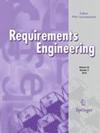铝土矿开采后森林恢复两种环境的土壤种子库:原生人工林和自然更新
IF 3.3
3区 计算机科学
Q3 COMPUTER SCIENCE, INFORMATION SYSTEMS
引用次数: 1
摘要
文章历史接收时间:2020年11月30日接受时间:2020月31日在线发表时间:2021年3月30日本研究的目的是比较巴西东南部铝土矿开采七年后,一个自然再生地区(F1)和另一个通过幼苗种植重新造林地区(F2)的土壤种子库。在每个区域,随机分布10个采样点,使用三个表层土样本代表每个采样点。样本被运到一个阴凉处,评估六个月,每两周识别一次新出现的个体。以Jaccard指数(SJ)为基础,采用聚类分析方法对植物区系相似性进行评价。物种丰富度和个体丰富度采用Student t检验进行比较。F1共登记繁殖体m-2 2114.94个,隶属于24个植物科51种,Shannon Wiener多样性指数H'=2.770,Pielou均匀度指数J'=0.705。F2代共登记繁殖体m-2 1168.62个,隶属于22科42种,H'=2.618,J'=0.700。F1和F2之间的(SJ)为0.61,表明高度相似。结果表明,繁殖体密度高,多样性好,不存在生态优势。在该地区发现的具有动物群落分散性的大量个体和树种多样性表明,自然再生和重新造林在铝土矿矿区的生态恢复方面是有效的。本文章由计算机程序翻译,如有差异,请以英文原文为准。
Soil seed banks in two environments of forest restoration post bauxite mining: native tree plantation and natural regeneration
Article history Received: 30 November 2020 Accepted: 31 December 2020 Published Online: 30 March 2021 The objective of this study was to compare the soil seed bank in an area under natural regeneration (F1) and another reforested through seedling planting (F2), seven years after bauxite mining, in Southeast, Brazil. In each area, 10 sampling points were randomly distributed, using three samples of topsoil to represent each point. The samples were transported to a shade house and evaluated for six months, where emerging individuals were identified every two weeks. Floristic similarity was evaluated with cluster analysis based on the Jaccard index (SJ). Species richness and abundance of individuals were compared using Student's t test. In F1, 2,114.94 propagules m-2 were registered, belonging to 51 species and 24 botanical families, Shannon-Wiener diversity index H’=2.770 and Pielou evenness index J’=0.705. In F2, 1,168.62 propagules m-2 were registered, belonging to 42 species and 22 families, H’=2.618 and J’=0.700. The (SJ) between F1 and F2 was 0.61, indicating a high similarity. The results showed high density of propagules, good diversity and absence of ecological dominance. The high number of individuals and diversity of tree species with zoochoric dispersion found in the areas indicates that both natural regeneration and reforestation were efficient in the ecological restoration of bauxite mined areas.
求助全文
通过发布文献求助,成功后即可免费获取论文全文。
去求助
来源期刊

Requirements Engineering
工程技术-计算机:软件工程
CiteScore
7.10
自引率
10.70%
发文量
27
审稿时长
>12 weeks
期刊介绍:
The journal provides a focus for the dissemination of new results about the elicitation, representation and validation of requirements of software intensive information systems or applications. Theoretical and applied submissions are welcome, but all papers must explicitly address:
-the practical consequences of the ideas for the design of complex systems
-how the ideas should be evaluated by the reflective practitioner
The journal is motivated by a multi-disciplinary view that considers requirements not only in terms of software components specification but also in terms of activities for their elicitation, representation and agreement, carried out within an organisational and social context. To this end, contributions are sought from fields such as software engineering, information systems, occupational sociology, cognitive and organisational psychology, human-computer interaction, computer-supported cooperative work, linguistics and philosophy for work addressing specifically requirements engineering issues.
 求助内容:
求助内容: 应助结果提醒方式:
应助结果提醒方式:


